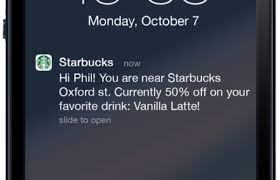I first heard of the term filter bubble a few years ago during one of my lectures during my bachelor. I found it an interesting topic as filter bubbles are everywhere, and I believe even more widespread during the pandemic. For those of you who don’t exactly know yet what a filter bubble is: you find yourself in a filter bubble, every time that you are surrounded by news and opinions that are in line with your opinion (Farnam Street, n.d.). This probably does ring a bell now, as for our generation we can easily link it to the algorithms that our favorite social media apps use. One well-known example of filter bubbles is when Trump (suddenly) won the presidential elections in 2016. A lot of people didn’t see it coming that Trump actually had won the elections as they were almost sure that Hillary Clinton would win (Baer, 2016). This happened because many people actually ‘lived’ in a filter bubble. This happened because the algorithms that are used by social media platforms like Facebook, generate a personalized timeline that is more adjusted to your preferences every time you open or like an article. The algorithm personalizes the content, which results in only content that is in line with your opinion showing up on your timeline at some point. The fact that it is so easy to surround yourself with other people who share the same opinions also reinforces the creation of filter bubbles. A lot of people tend to believe they are well-educated on certain topics because they read content all day. But the problem is that this content is so tailored to their beliefs, that it often only tells one side of the story (Baer, 2016).
Another example of when filter bubbles were a hot topic was during the peak of the pandemic when polarization occurred in society due to the different beliefs of people. Two groups were created, and more people started believing that vaccines were only causing harm and that the pandemic was a hoax. In the United States, 42% of Americans have seen a lot or some news about the coronavirus outbreak that seemed completely made up (Mitchell & Oliphant, 2020). This number is alarming, as this can be caused by people living in filter bubbles. People who questions the pandemic started clicking on some articles that agreed with their doubts, causing the algorithm to show them more and more similar articles that are in line with their opinions. This causes people to believe that what they think is true because that’s the only news they see at some point. However, the problem is that they only see a very small fraction of the actual news on the pandemic and thus barely have an idea that there are other facts that can be true.
Personally, I think this is a serious problem and one of the downsides of social media. People can start believing in their own reality and not listen to others anymore, because all they see is news that is in line with their believes. What do you guys think of it? And do you believe that there is a clear solution for the problem of filter bubbles?
References
Baer, D. (2016, November 9). The ‘Filter bubble’ explains why Trump won and you didn’t see it coming. The Cut. Available at: https://www.thecut.com/2016/11/how-facebook-and-the-filter-bubble-pushed-trump-to-victory.html (Accessed: October 13 2022)
Farnam Street (2019, November 14). How filter bubbles distort reality: Everything you need to know. Farnam Street. Available at: https://fs.blog/filter-bubbles/ (Accessed: October 13 2022)
Mitchell, A. & Oliphan, J. (2020, March 18). Americans Immersed in COVID-19 News; Most
Think Media Are Doing Fairly Well Covering It. Pew Research Center [Blog Post]. Available at:
https://www.journalism.org/2020/03/18/americans-immersed-in-covid-19-news-mostthink-media-are-doing-fairly-well-covering-it/ (Accessed: October 13 2022)

